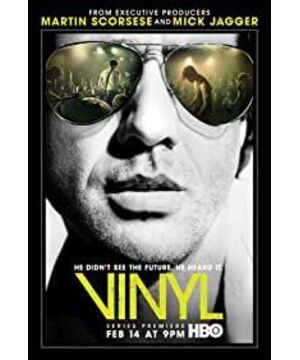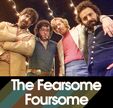(1)
What do you think about the fact that Black Sabbath can "deliver a stronger message" than Pink Floyd?
On March 1, 1973, Pink Floyd released their eighth studio album, The Dark Side of the Moon. The music world was shocked. On the album cover, a beam of flat white light is decomposed into a dazzling rainbow by a prism, and the strong contrast between light and dark hints at the album's vast theme of metaphor and deconstruction. You know, in 1973, when transistor electronic instruments and polyphonic synthesizers were still the future, it was hard to imagine what Roger Waters and others were relying on to knock out such eerily claustrophobic electric sounds like "On The Run". The obscure life proposition in the album has exceeded the weight that almost all rock music at the time could bear, and the artistic conservativeness and commercial pretense were vulnerable in the face of "The Dark Side of the Moon". And a few months ago, Black Sabbath just finished their fourth album "Black Sabbath Vol.4".
Vertically, the contrast between the depths of the era these two albums can reach can be seen at a glance. But horizontally, in the 1970s, Black Sabbath could become one of the pioneer bands that rewrote the rock landscape with "Heavy Metal", an achievement that Pink Floyd could not accomplish. While their British compatriot Led Zeppelin laboriously built the "Stairway to Heaven" across the North American continent, the savage speed and power of Iron Man or Paranoid had planted a seed in the bodies of people on both sides of the Atlantic. prophetic seed.
This prophecy says that heavy metal is beginning to enter the fray, and that the yin and yang of rock and roll are beginning to reconcile.
Richie, who was wearing a "Black Sabbath Vol.4" T-shirt, fired at the A&R meeting like gunpowder. His task of finding new artists who could sign within two weeks was as difficult as it seemed to the scouts. sky. Ever since he stumbled into his company's door with David Bowie's "The Jean Genie" in the background music, Richie's "midlife crisis" seems to have begun to reverse in full force. Rejecting the acquisition of "Poly Gold" is a wreck, and is it really confident to pull Zak and others and all the star scouts into the water, or is it an opportunity and "apocalypse" that has been reproduced over and over again in him? Richie, who was reborn from the ashes in the ruins, proved that the "halo of the protagonist" of the American TV series has worked again. But I still believe that materialism about the history of pop music will triumph over this nonsense.
The New York Dolls band, which let the cocaine in Richie's mind rip up wantonly, gradually withdrew from the stage of historical materialism with the collapse of the performance building. On the one hand, Pink Floyd is magnifying the artistic weight of rock and roll, and on the other hand, Zeppelin and Black Sabbath use heavy metal to show the world the most masculine side of rock and roll. The heavily made-up and shocking New York Dolls are outliers on both sides. Not only do industry insiders like Zak say they "passed away a year ago," but the glam rock they represent is dying.
In February 1973, the New York Dolls' first self-titled album was born at an untimely time, and as soon as it was born, it was about to witness its own genre begin to decline. A few months later David Bowie will "kill" Ziggy Stardust himself, and a year later T.Rex's Marc Bolan will announce in Hollywood that "glam rock is dead". Gender-obsessed powder and lazy music no longer belong to the next era. But as the New York Dolls sing themselves on "Lonely Planet Boy," at the end, these are just their "Lonely Planet Fun."
New York Dolls will make wedding dresses for others. Their dashing and rebellious attitude swept away a little fire of New York punk, and sowed a primitive seed for the underground fire of punk rock that would soon follow. The razor-sharp guitar tone of Johnny Thunders is the first thing to do, making the next heavy metal aggression more logical.
And the land of fireworks is suitable for burying the past, and the coquettish and intense New York Dolls have a night of carnival, which has collapsed a gorgeous era belonging to the "Lonely Planet Boys".
(2)
And the "Lonely Planet Boy" in this story is The Nasty Bits. Although this episode only gave a few minutes of the plot, but seeing James Jagger and his father's almost identical faces, I still believe that they are the ones who really enjoy the "halo".
What's even more surprising is that in addition to Jagger who plays the lead singer Kip Stevens, The Nasty Bits is actually played by a well-known band in the real world - the Beach Fossils in Brooklyn, New York. Seeing the harmless face of the lead singer Dustin Payseur trying to squeeze out the fierce appearance of punk youth, the original Indie Pop band played the harsh and rough chords of the prototype punk, and the feeling of incongruity is still very obvious.
Apparently Richie hasn't taken The Nasty Bits too seriously. Jamie decides they're going to be the stars of the future, and Juile, who was scheduled to audition, backs down at their poor performance. Getting a punk band to play The Kinks is clearly embarrassing them. But what's interesting is that Juile's "All Day and All of the Night" for The Nasty Bits can be very coincidental, and of course there is no shortage of far-fetched links to the next Andy Warhol's appearance. The Kinks' famous single was included in their double-CD compilation "You Really Got Me" in 1994. The cover of the compilation was a pop art portrait of which muse? The author cannot verify. If this portrait of the large yellow and black blocks was written by Warhol, it seems a bit like Edi Sedgwick, Warhol's darling. But in fact the creator of the painting is another Pop artist, Roy Lichtenstein. His influence in the pop art world in the 1980s was no less than that of Andy Warhol, who had entered the late stage of his career. The popularization of cartoon characters was one of his artistic labels. And his most famous work is the pop girl "Drowning Girl" who is about to drown in the sea, and her blond red-haired doppelganger who always looks sad, or wipes tears or listens to the phone sideways.
I doubt whether the screenwriters of "Vinyl Age" are really so careful, using these details that are easy for the audience to examine and associate to inadvertently connect the context of the story. But maybe every frame is filled with cocaine, the full Martin Scorsese style of the American drama is indeed thick and thin, the key is how we capture the jump of the needle.
However, the key word for this episode is "Memories Kill". The story of The Nasty Bits and the New York punks will have to wait, but let Andy Warhol and his pop disciples appear first.
(3)
Before the punk explosion of CBGB, the most vigorous and decadent rock music in New York was hidden in those secret little corners.
In the 1970s, solo Lou Reed wrote a song called "Sally Can't Dance". The song sings "Sally is losing her face/She lives on St.Mark Place". Before Lou Reed wrote about Sally's helplessness, the blue-gray past about his youth had actually emerged on the characters in the song. This poorly sung song reflects the disillusionment Lou Reed experienced more than a decade ago, just like the arrogance of the "Velvet Underground" who squandered beauty and talent in the 1960s. This extravagance has been seen for more than 20 years, and it was only in Oasis' "Don't look back in anger" that I got the answer of "Sally can wait".
This "St. Mark's Street" where Sally lives is the birthplace of Lou Reed and the Velvet Underground. This street in New York's East Village, the "Beat Generation" enclave of rockers and many underground fringe artists, was a down-and-out paradise in the '60s, with poor artists and dissidents crammed with cheap bars and hotels. Even rock 'n' roll didn't hit the streets until a few years later when New York punk and new wave began to flow. At that time, bands such as Ramones and Blondie will frequently appear on the street. And in front of Lou Reed in the 1960s, the memory of "St. Mark's Street" was in a humble apartment.
The apartment, called The Dom, is the "love nest" of Andy Warhol and his artist friends. The red walls and white window frames are bland on the outside, and the four apartment walls inside are all broken through. On April 8, 1966, fashion celebrities, artists, beautiful actors and models in New York City, literary speculators with ambitions or dreams, drug dealers... all gathered in this dimly lit apartment. Andy Warhol and his assistants used projectors to cast projections of apocalyptic characters. Before the projection, the Velvet Underground was playing their song.
The show will run for a year, and Andy Warhol named it "Exploding Plastic Inevitable."
"Plastic Explosion Inevitable" is a multimedia experimental performance led by Andy Warhol. It combines rock music, light art and stage art and many other forms. The Velvet Underground is the protagonist of the rock show, and short films or slideshows shot by Andy Warhol will undulate and flow on the gray walls with their music. In addition, dancers from Warhol's studio "The Factory" will shuttle in Lou Between Reed and the others, they waved the whip in some indescribable poses. The maze of lights on the ceilings and walls, the voodoo songs of the Velvet Underground, the dancers doing sex and drug-inspired dance moves... all this psychedelic seeps through the eyes and ears of the crowd , opened a flower of desire. In the episode, the protagonist Richie and his future wife Devon are among them.
Andy Warhol, the manipulator of all this, stood calmly in front of the projector, his sunglasses as dark as a cave kingdom, shining a dim light on every fascinated face.
is still Lou Reed, but the time is far from 1990, and Andy Warhol has been dead for three years at this time. Lou Reed and John Cale have reunited for an album called Songs for Drella. The first song "Small Town", the lyrics say:
"When you're growing up in a small town
You say, no one famous ever came from here
…
I hate being odd in a small town
If they stare let them stare in New York City”
The protagonist of this story from Small Town all the way to New York City is Lou Reed's good friend Andy Warhol. Twenty-year-old Andy Warhol traveled alone to New York from the suburban town of Pittsburgh with $200 and a portfolio. In the next thirty-eight years, he will build an art kingdom of his own, and New York will become his closest home.
At a time when Andy Warhol came to prominence with his commercial art activities and his representationalism, he gradually completed his greatest artistic creations. In 1964, Warhol selected a factory near East 47th Street and Second Avenue, rented the entire fourth floor, and had his right-hand man Billy Name paint the interior of the floor silver with spray paint and foil, not only the walls and ceiling, Even the electrical chair cabinet and even the toilet are painted silver. Andy Warhol, who always wears a silver wig on this floor, is truly at one with his own creations. This cold and narcissistic space is Warhol's famous studio "The Factory".
The spacious studio is stocked with paints, canvases and the materials needed to create his signature serigraph paintings. In addition to painting, Andy Warhol has made many avant-garde films and short films in the "factory". The content usually only presents single meaningless things such as eating, sleeping, kissing, etc., exploring a kind of response to all "meaning" with nothingness. question.
And nothingness quickly slides into the abyss of pleasure. The "factory" has attracted a large number of New York artists, actors, models, decadent literati and rock musicians, and this originally private studio has gradually become a social place centered on Andy Warhol. It can't be said that this is the result of Warhol's inadvertentness. This genius who has low self-esteem since he was a child has an almost fanatical hobby for fame. He is a successful speculator who can turn infatuation into wealth - he formed the Velvet Underground and broke into the rock circle, founded the magazine "Interview" which interviews celebrities, and designed the album cover for "Rolling Stone" to make his name in the mainstream world. . . ...and in his kingdom's "factory", he is able to control the ecstasy and creative passion brought by fame at will. Here he “breds” the velvet underground and the “inevitability of a plastic explosion,” traversing visiting celebrities and superstars, observing fringe people who share a passion for lust and consumerism.
Facing the stars who stopped in the "factory", he pointed the 16cm camera at them. In front of this creation called "Screen Test", the stars fiddled with their expressions at will, concealed their intentions, and connected a series of black and white silent films with no plot and meaningless. It was like a silent exchange just for Warhol and his friends: Lou Reed, David Bowie, Bob Dylan, Lennon and Yoko, Alan Ginsburg, Dali, Nico, Edie... Warhol's four hundred The multiple rolls of film are unrolled, which is like the most complete underground group portrait in the 1960s.
The "factory" changed its location several times later, and refused to refuse to come to the three religions and nine streams. Andy Warhol finally suffered the consequences of this. On June 3, 1968, the radical feminist writer Valerie Solanas burst into the new "factory" site with anger and hatred because her script was rejected and fired three shots at Warhol. Although several internal organs ruptured, but he still survived. However, presumably after this disaster, he already has a heart for the open door of the "factory". Of course, these are all things to come. In the Lower East Side of New York, where The Dom and the "factory" are connected in series, Andy Warhol single-handedly created an underground kingdom with rock music and photography as its dual core. Intertwined with psychedelic sound waves and lewd light and shadow shocks, a generation of alternative people handed him their bright skin and age.
It's no wonder that in 1973, the tired-eyed and aged Devon missed that time so much. But I can't say whether she misses Warhol's shots more, or the heat and passion she had when she first met Richie. In those few scenes, Devon was driving alone in the car, and even the children were forgotten in the fast food restaurant. She fantasized about being Karen Carpenter singing "Yesterday Once More." This classic pop song, also written in 1973, serves as an introduction on the album "Now & Then", using multiple covers to evoke memories of the 1960s that have not faded. In this episode, if the collapse of the New York Dolls reignited Richie's urge and passion for rock and roll, an explosive realization, the light that flows on Devon remains calm. Time is fleeting, and Andy Warhol can't keep it for her.
Pop portraits and velvet gold dust have been squandered and buried in memories of old times. Since "plastic explosion is inevitable", let the prodigal sons who will be carrying the piano explode more violently.
(even slower....)
View more about Vinyl reviews











